Key takeaways:
- Songwriting awards celebrate creativity and inspire songwriters to refine their craft and share diverse narratives.
- Effective lyrics rely on authenticity, vivid imagery, and a captivating rhythm to create deep emotional connections with listeners.
- Memorable lyrics can be achieved through techniques like repetition, storytelling, and innovative rhyme schemes that engage the audience.
- Personal experiences and influences from childhood music, collaboration, and literature significantly shape a songwriter’s style and lyrical content.
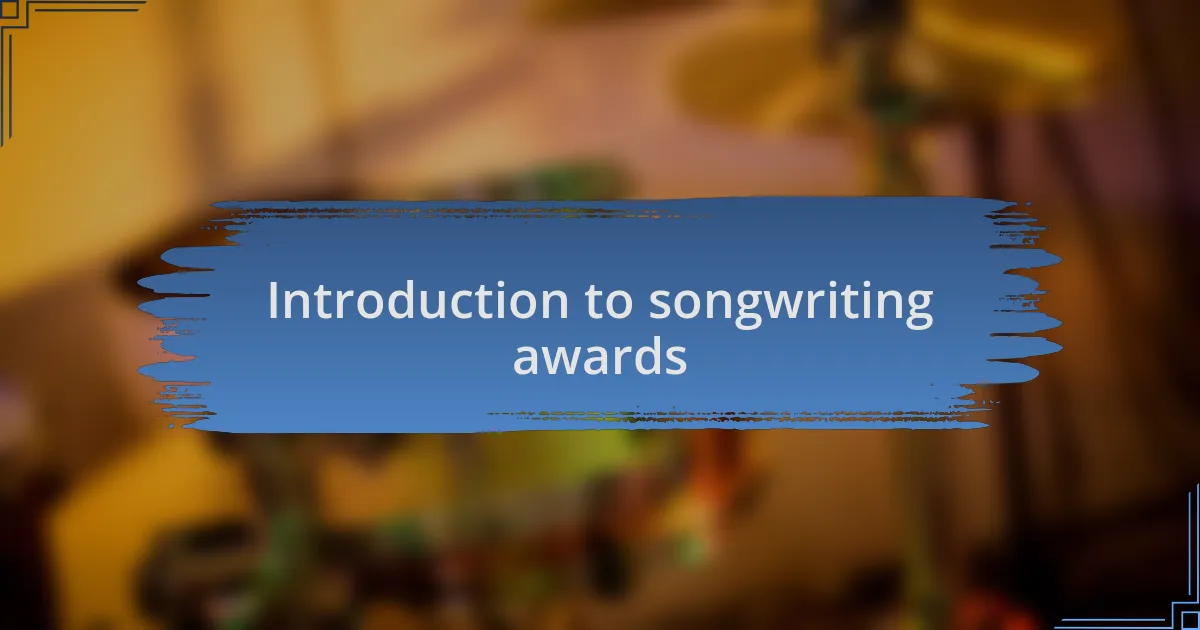
Introduction to songwriting awards
Songwriting awards shine a spotlight on the creativity and craft of lyricists, celebrating the artistry behind impactful music. I still remember the thrill of receiving recognition for a song I poured my heart into; it solidified my belief in the power of lyrics to connect with others. Have you ever felt that rush of validation when someone appreciates your work?
These awards not only honor individual achievements but also elevate the entire songwriting community. When I see fellow songwriters recognized for their unique voices, it inspires me to dig deeper in my own writing. It begs the question: how do these accolades motivate us to refine our craft and pursue new artistic challenges?
As I reflect on my journey, I realize these awards also spotlight the diverse narratives we weave through our songs. They remind us that every lyric has the potential to tell a story that resonates with someone out there. Isn’t it fascinating how a few lines of text can evoke such emotion and spark conversation?

Importance of lyric writing
Lyric writing is essential because it serves as a bridge between the songwriter and the listener. I remember vividly writing a song after a heartbreak; those words became not just my story but also a shared experience for others who felt the same pain. Have you ever noticed how a well-crafted lyric can encapsulate an emotion you couldn’t quite express?
The power of lyrics lies in their ability to evoke feelings and tell stories. I’ve often found myself reflecting on how a single line can resonate deeply with someone, transforming a personal moment into a collective experience. This connection is what makes lyric writing a crucial part of songwriting; it creates a bond between the artist and their audience, drawing them into a shared emotional journey.
Moreover, lyrics leave a lasting impact, shaping how we remember songs long after they’ve played. I’ve caught myself humming a catchy phrase or recalling a poignant line even days later. Isn’t it interesting how certain lyrics stick with us, illustrating the profound way words can linger in our minds and hearts? This highlights the importance of carefully choosing each word to ensure it resonates and endures in the listener’s memory.
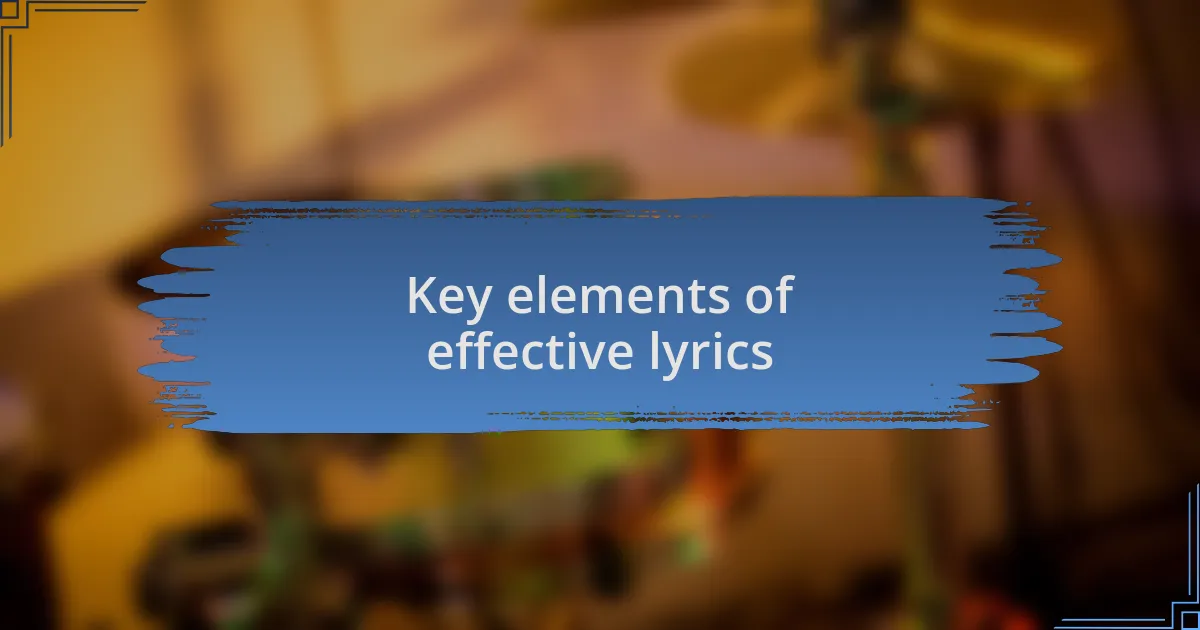
Key elements of effective lyrics
The first key element of effective lyrics is authenticity. I remember writing a song about my struggles with self-acceptance, and it was that raw honesty that made the lyrics resonate. When listeners can sense the real emotions behind the words, it creates a profound connection. Have you ever felt touched by a line that seemed to speak directly to your experience? That’s the magic of being genuine in your writing.
Imagery is another crucial aspect I often consider. Using vivid descriptions allows listeners to visualize the story being told. For instance, in one of my songs, I described a stormy night to convey a sense of turmoil. I found that the more I painted a picture, the deeper the audience could dive into my emotional landscape. Can you imagine how much richer a song can be when it transports you into a specific moment or feeling?
Lastly, rhythm and flow cannot be underestimated. The way words fit together musically can enhance the emotional impact. I once rewrote a chorus multiple times until it felt just right—smooth and catchy while still conveying the meaning powerfully. Don’t you think that when the sound of the lyrics matches their intent, it elevates the whole experience? Balancing lyrical content with a captivating rhythm can transform a good song into something unforgettable.
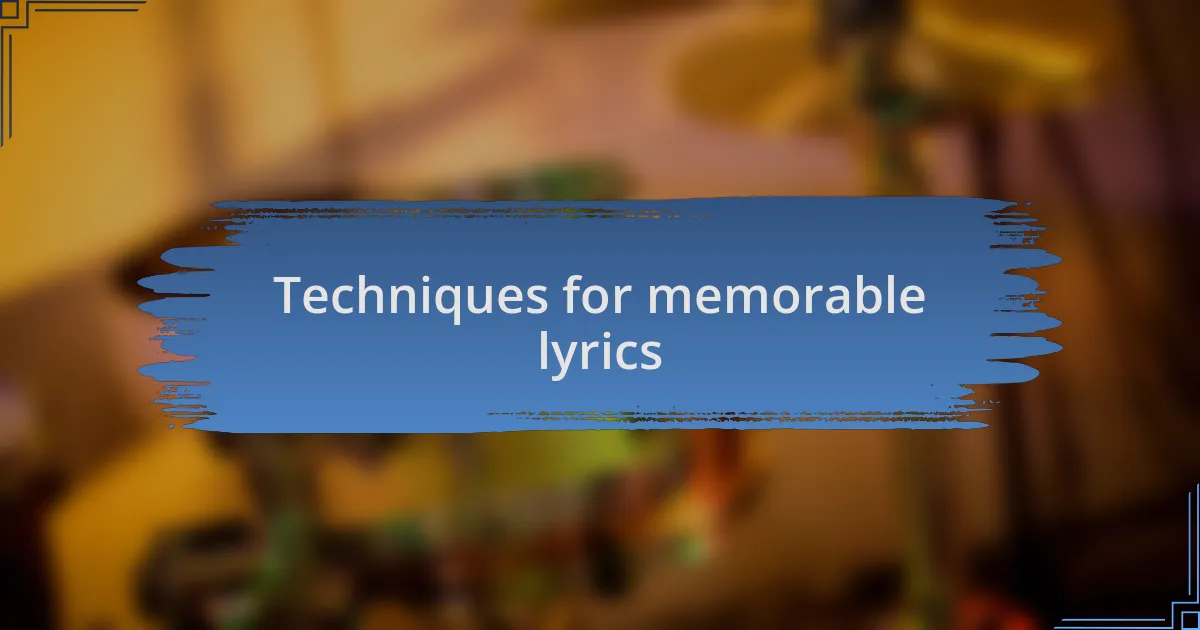
Techniques for memorable lyrics
When crafting memorable lyrics, I find that repetition can be a powerful tool. It’s like a mantra, creating a hook that lingers in the listener’s mind long after the song ends. I still recall a time when I used a repeated phrase to drive home the emotional weight of a breakup; it was haunting yet beautiful, and people often told me they sang it to themselves days later. Isn’t it fascinating how a simple repetition can transform a fleeting thought into something that resonates deeply?
Another technique I value is storytelling. I often weave a narrative throughout my lyrics, as it allows listeners to become invested in the characters and emotions involved. In one of my pieces, I depicted a conversation between two friends in a diner, exploring themes of nostalgia and regret. The feedback I received was overwhelming; listeners felt as if they were part of that moment. Have you noticed how a well-crafted story can evoke a strong sense of empathy in the audience?
Rhyme schemes are also essential in my writing process. Playing with different patterns not only adds a musical quality but also keeps the listener engaged. I remember experimenting with slant rhymes in one of my songs, and it created a unique texture that caught people’s attention. Have you ever found a particular rhyme scheme that just clicked, adding an unexpected twist to your work? It’s moments like these that make the journey of songwriting so exhilarating.
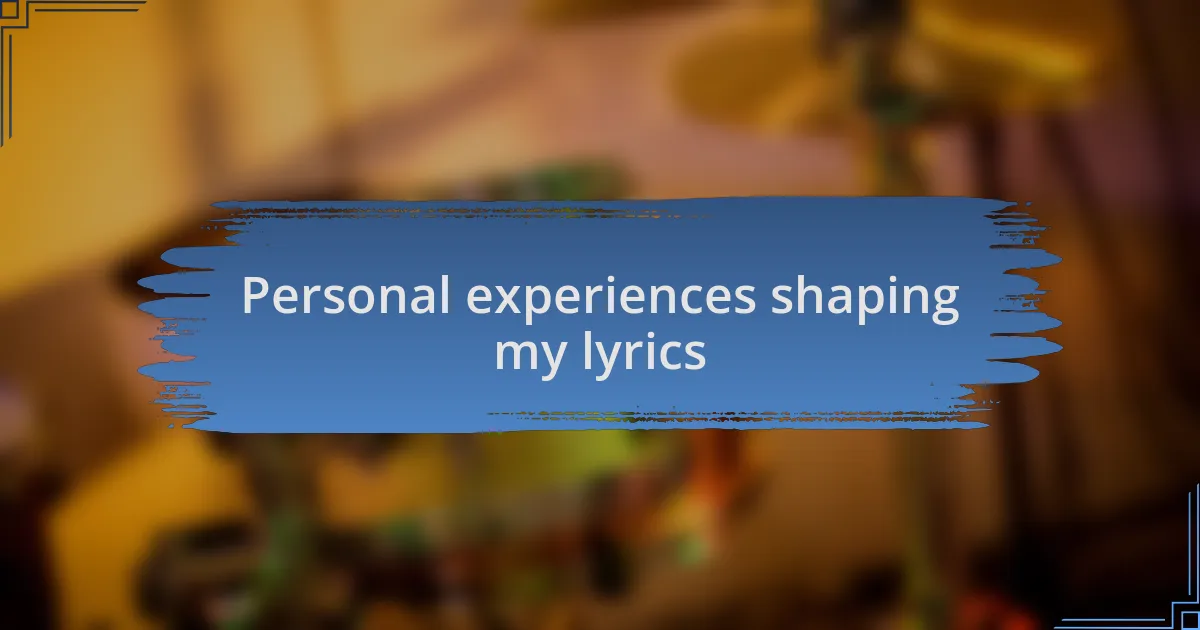
Personal experiences shaping my lyrics
Personal experiences have always served as the wellspring for my lyrics. I vividly remember the day I wrote about my grandmother’s struggles with memory loss. That haunting feeling of watching someone I loved fade away pushed me to write a song that captured both loss and love. Have you ever felt the need to express an intense emotion that seemed to demand a voice?
There was one summer when I traveled alone, meeting strangers who shared their stories with me. I took those snippets of conversations and turned them into lyrics about connection and longing. In one particular song, I wrote about a fleeting moment shared with a newcomer in a café; a moment that felt monumental, yet transient. It’s amazing how the essence of a brief encounter can linger in our hearts, isn’t it?
I also draw heavily from my own personal growth and challenges. There was a time when I struggled with self-doubt, and I poured that turmoil into a song about resilience. As I penned the lyrics, I could feel that weight lifting, transforming pain into something beautiful. Have you ever found catharsis through your own words? The act of songwriting itself can be a powerful tool for reflection and healing.
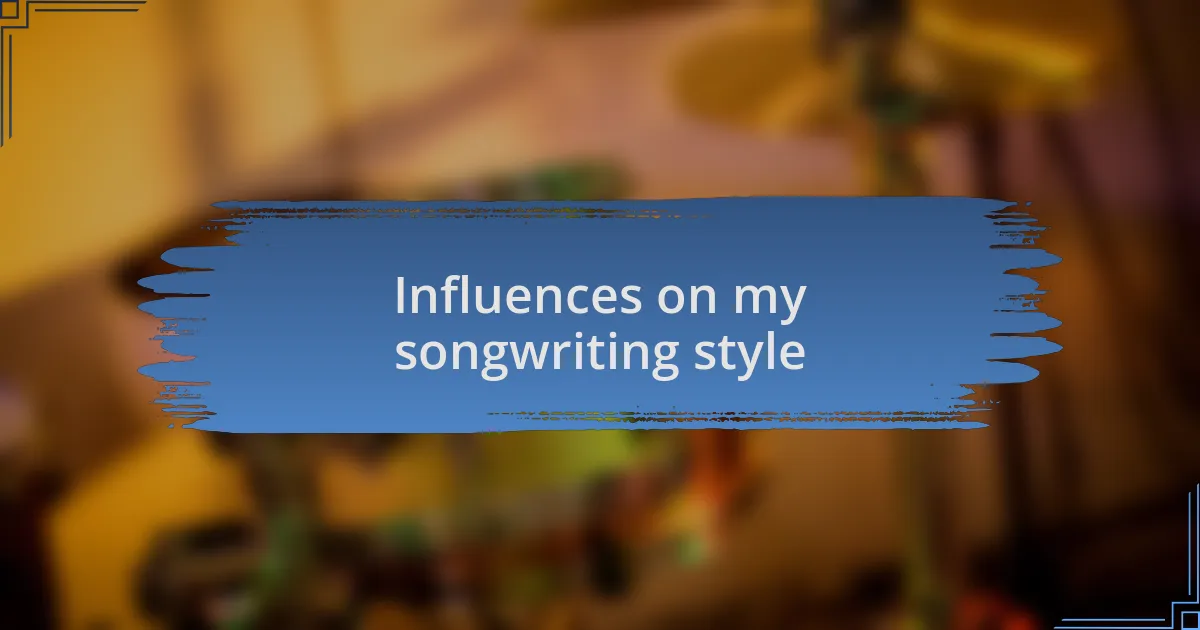
Influences on my songwriting style
When reflecting on my influences, music from my childhood plays a significant role in shaping my songwriting style. I grew up listening to my parents’ vinyl collection, where artists like Bob Dylan and Joni Mitchell taught me the power of storytelling in music. Their lyrics often told stories filled with vivid imagery and emotion, prompting me to ask myself: how can I weave similar narratives into my own songs?
Collaboration has also greatly impacted my approach to writing. I remember a songwriting workshop where I teamed up with a fellow musician. Our creative back-and-forth sparked unexpected ideas, reminding me that sometimes, stepping out of my comfort zone can lead to breakthroughs. Have you ever heard a different perspective that challenged your own? It’s in these moments of shared creativity that I find new dimensions within myself.
I must also mention the influence of my favorite books and poetry on my lyrics. One particular poem moved me so deeply that it became the framework for an entire song reflecting themes of longing and hope. The exploration of words on the page often inspires me to seek poetic structures and emotions within my lyrics. Do you ever find yourself drawing inspiration from sources outside of music? For me, it’s a constant reminder that art is interconnected, and inspiration can truly come from anywhere.